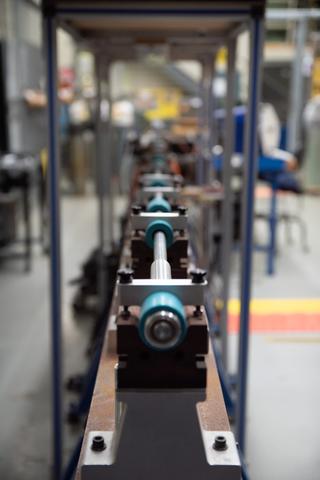Spotlight: Test Instrument Puts Materials Under Forces at High Speeds to Mimic Many Instantaneous Situations in the Real World

This elongated test instrument, the first of its kind in the world, puts materials under two extreme conditions in fractions of seconds, rapidly heating them and applying force at the same time. It’s a modified version of a Kolsky bar, an instrument with origins dating back to the turn of the 20th century.
The Kolsky bar is set up with a long set of steel cylinders as shown here. A sample sits between them. Thin metal bars rest inside the cylinder on one side. When we strike one end with a projectile propelled by nitrogen gas, it creates a pressure wave that moves through the bars at the speed of sound in steel (way faster than a bullet) and hits the sample.
NIST’s Kolsky bar was designed to rapidly heat up the sample before the pressure wave hits it. That means we can make measurements on materials as they are weakening or changing structure at the molecular level (the microstructure) from the heat.
It’s a type of measurement that had never been attempted elsewhere in the world before NIST got involved.
But why put these materials through the wringer so fast? That’s because some major moments in life happen in fractions of seconds – car accidents, manufacturing processes, bomb explosions, athlete collisions – and we need to know how the materials that we use in everything from cars to sports helmets perform in those brief moments.
That’s especially true for products made via additive manufacturing, also known as 3D printing, the process of building a shape from the ground up, one layer of material at a time. It’s a relatively new process for creating parts to go, for example, in a car.
Thanks to the Kolsky bar experiments happening at NIST, we can gather crucial data on these parts to see how they stand up to extreme, real-world conditions.
Follow us on social media for more like this from all across NIST!

